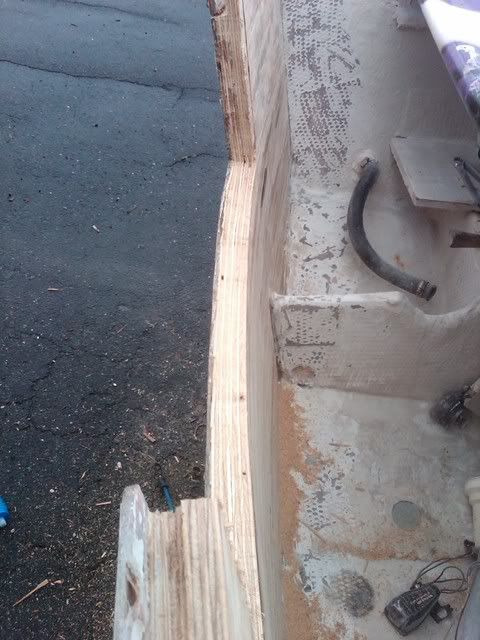Actually, its better to go wet on wet to keep the chemical bond going....just because the resin begins to kick, its still considered wet on wet for a few hours...depending on who's resin you use, they will tell you how many hours you have to continue layering before its required to sand again.....if using slow hardener, you can go several hours after its kicked...even up to 12 hours on some brands depending on temperature....it usually takes up to 24 hours to fully cure.
Once the core is in place....pre-cut all your glass, the tabbing and full sheets and have them ready......then make your putty fillets and let it just start to set up and then add your tabbing tape...if you do it right away, you may squish out the fillet, so just let it set up a bit but still tacky. Wet out your tabbing and let the layers overlap a bit...in other words, if using 6 inch tape, one layer has 4 inches on one side of the joint and 2 inches on the other, then the second layer would be layed on the opposite side, creating the 2 inch overlap......let that start to tack up so it doesn't slide on you when putting on the full sheets....then pre-wet the core, let it start to tack and then add the glass and wet out completely.
The 40oz glass is pretty heavy...I like using 17oz for the sheets and 12 oz for the tape..you will use a lot of resin and it will take some time to completely wet through that heavy material, so be patient......make sure you have resin rollers, bubble rollers and plastic squeegees to spread the resin and remove the air pockets.....you will need to wait until each layer tacks a little before adding the next because of the weight of the glass.....it may want to slide on you being in a vertical position.....maybe you can use some type of plastic to clamp and hold the top of each sheet until it kicks.......but i wouldn't sweat it.....read the working and curing tables of your resin....you should have plenty of time....even overnight if you do a last layer late at night and continue the next morning.....all else fails, just let fully cure, sand with 80 grit, wipe with alcohol and keep going.








